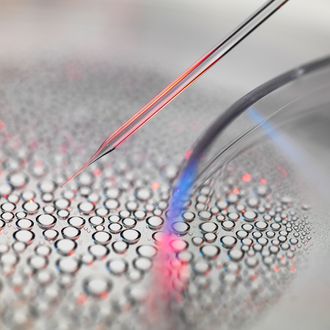
For a long time, some biomedical researchers and other observers have been trying to raise the alarm about the under-regulated nature of stem-cell treatment centers. Stem cells are an incredibly promising medical treatment, but all sorts of charlatans and quacks have popped up, making claims that extend well beyond the known scientific research.
This has led to some weird and sad cases. Before hockey legend Gordie Howe died, for example, his family made some remarkable claims about the role a Mexican stem-cell clinic played in helping him recover from a stroke and other medical problems — claims that were never backed up by hard evidence, and which many media outlets accepted fairly credulously. There was an air of mystery about exactly what happened to Howe, simply because he is one man and he was never examined by independent observers to figure out exactly what his family claimed to have witnessed following his treatments.
There’s less mystery, though, about another recent instance of stem-cell shadiness. According to a New England Journal of Medicine article summed up by the New York Times, “Three women suffered severe, permanent eye damage after stem cells were injected into their eyes, in an unproven treatment at a loosely regulated clinic in Florida.” All three women, who were in their 70s and 80s and suffered from macular degeneration, walked into the clinic with good-enough eyesight to drive, but now one is blind and the other two “lost much of their eyesight.” As the Times article notes, the victims’ stories “expose gaps in the ability of government health agencies to protect consumers from unproven treatments offered by entrepreneurs who promote the supposed healing power of stem cells.”
The clinic was operated by a company called Bioheart which is now called U.S. Stem Cell, and it charged the women $5,000 each for the procedure. The CEO, Kristin C. Comella, told the Times that since the company was injecting the patients with their own stem cells — harvested from fat obtained via liposuction — it didn’t need F.D.A. approval for the procedure.
In a way, this is the scariest part:
All three women found U.S. Stem Cell because it had listed a study on a government website, clinicaltrials.gov — provided by the National Institutes of Health. Two later told doctors they thought they were participating in government-approved research. But no study ever took place, and the proposed study on the site had no government endorsement. Clinical trials do not need government approval to be listed on the website.
It’s asking a lot of consumers to think they’ll be able to understand that a service listed on a site named clinicaltrials.gov may not have any legitimate science behind it. This is an area that badly, badly needs better regulation — there are too many vulnerable people out there, and the hype about stem cells has been too loud for too long.




